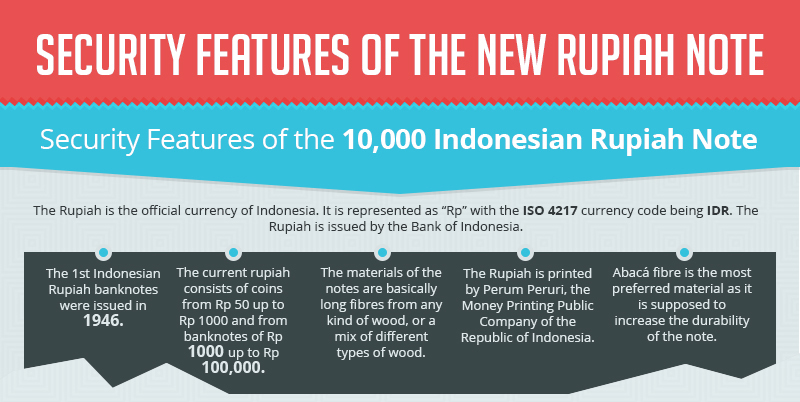Back to the Indonesian Rupiah Buy Page
Beware Of Counterfeit Notes: New Security features On The Indonesian Rupiah Notes
The currency note for free Indonesia was first issued by the proclamation of October 3rd, 1946. Over the years of Indonesian revolution, many issues of banknotes followed. On the 1st of July, 1951 the ‘De Javasche Bank’ became the Bank of Indonesia, which had the responsibility of issuing banknotes of 5 Rupiah and above. Thus, the first truly ?Indonesian Rupiah? as we know it today appeared in 1953.
Since then, the Indonesian Rupiah is issued and controlled by the Bank of Indonesia. But over years of several iterations, the currency has fallen prey to criminals who print fake money and circulate it in the market.
During the first half of 2012, it discovered over 1,386 fake Indonesian currency notes. By the same time next year, the number increased by 54% to 2,141 (97% of which were of the 100,000 denomination alone!).
Though the Indonesian government has been encouraging wider usage of the non-cash mode of payments, it is essential to recognise the New Security features of the Indonesian Rupiah notes to spot the fake ones.
Official Rupiah bank notes have sharp and distinct printing impressions. The first step to recognise a fake note is to look for blurred printing. Embossment of the denomination numbers, watermark images depicting revolutionary heroes, reinforced security threads are other anti-counterfeit features to look out for.
With the aim of making it easier for the viewers to spot fake Indonesian Rupiah notes, Currency Liquidator presents the following infographic which compares the old notes with the anti-counterfeit security features of the new 10,000, 20,000, 50,000 and 100,000 Indonesian Rupiah notes. Read on!


[title size="2" content_align="left" style_type="default"]Leave A Comment[/title]